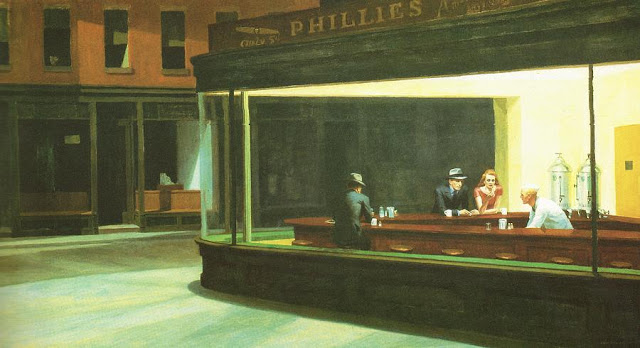Yet again, we are impressed by Francis Quirk’s record of bringing diverse and intriguing art forms to Lehigh University. On November 3, 1963 the very popular Japanese Calligrapher, Nankoku Hidai came to campus to lecture as part of an American Tour.
 |
| Nankoku Hidai |
Nankoku Hidai was born in 1912, as the second son of Tenrai and Shokiokun. After the death of Tenrai, he took over ‘Shogakuin’ (the Institute of Calligraphic Studies) along with management of Tenrai’s valuable collection of rubbings and ancient Chinese calligraphy books. At the same time, in Shogakuin Publications he continued to publish ancient Chinese books; promoting the spread of classical calligraphy.
 |
| Nanoku Hidai at work |
In 1945, he wrote ‘Den-no-Variation’ (Lightning-Variation), the first avant-garde work that moved beyond traditional characters for the first time in the history of calligraphy. When it was exhibited the following year, it created a sensation in the calligraphy world.
During Nankoku's career he had fourteen one-man-shows around the world including Tokyo, New York and other art centers. His work is in many museums including MOMA and Yale University. He also lectured the history of calligraphy at more than 20 universities including Princeton, Oxford, Columbia and Lehigh. He died in1999 at the age of 87.
As part of the 1963 lecture tour, Nankoku visited Lehigh University in Bethlehem, Pennsylvania with his talk starting at 8:00 p.m. The audience consisted of faculty members, students and art lovers. The lecture began with a question-and-answer session between the audience and Ned Ouyang from Mi Chou Gallery, along with Nankoku. The Mi Chou Gallery was America’s first gallery dedicated to Asian Art and it had hosted a one man show of Nankoku’s work. After unexpected questions and shared misconceptions, an 8 mm film showed Japanese calligraphers at work (Sokyu Ueda, Yukei Tejima, Suiho Kuwahara, Yasushi Nishikawa, Tsuneko Kumagai, and others.) Nankoku had filmed them at work. This was followed by a slide show.
 |
| Nankoku Hidai performing a demonstration/lecture at Lehigh University |
Nankoku explained the history of calligraphy in China and Japan. The lecture ended in two hours, but the enthusiastic audience remained for a dialog that ran until midnight. Nankoku later received a letter of thanks from Francis Quirk, chief professor of the Department of Fine Arts.
 |
| Three Fathers by Ninkoku Hidai |
To put his work into context we have excerpted from a viewer’s comments on two of his works that were included in a 2018 exhibition at M+ in Hong Kong.
The impact of Hidai Nankoku’s two works lies in their deconstruction of Chinese characters, returning them to the vibrant beginnings of character formation and bringing back the concise and clear semiotic linkage between images and words. As stated in M+’s descriptions of the works, the artist deliberately uses the effects of the brush dragging on the surface to express his emotions (Work 63-12). On the one hand, this is in keeping with traditional calligraphy, but on the other, it visually restores a sense of childlike naiveté and simplicity. Meeting the viewers’ gaze, the four eyes in Work 12 can also be interpreted as the Chinese character ‘目’ (lit. ‘eye’). The form and meaning of this word become fluid through artistic manipulation. The artist returns to the way in which Chinese characters were originally formed through pictorial interpretation, similar to how European artists reset formalised artistic traditions in the Modernist movements in the early 20th century.
 |
| art by Nankoku Hidai |
 |
| art by Nankoku Hidai |
In 2012 a retrospective of his work was held at the Tokyo Gallery and BTAP
Tokyo Gallery+BTAP We excerpt from a contemporary write up here.
This year marks the centennial of the birth of Nankoku Hidai (1912–99), the second son of Tenrai Hidai (1872–1939), said to be the father of contemporary calligraphy in Japan. After the death of his father in 1939, Nankoku took over the reins of the Shogakuin (Japan Society of Calligraphic Education). In 1945, he began producing avant-garde calligraphy pieces that explored the medium’s potential for abstract expression, subsequently continuing to cultivate his experimental tendencies.
In 1959, Nankoku first traveled to the US, where he had the opportunity to exchange views with many contemporary artists. During this time, he devoted all his energies to promoting the art of calligraphy abroad, holding solo exhibitions in New York, San Francisco and Washington DC, He also gave lectures on the history of the medium at more than 20 universities, and gave other artists calligraphic instruction.
Because it is based on representational pictograms, calligraphy is an art that cannot be understood without knowledge of its painterly qualities and the historical genealogy related to its compositional principles and brushstroke techniques. As an institution devoted to Japanese contemporary art, Tokyo Gallery + BTAP wanted to stage an exhibition that would offer us the chance to trace the continuous, unbroken traditions associated with this history.
A number of calligraphic works by Nankoku’s wife, Shoha Hidai (1914–72), will also be on display. Inspired by the rhyme structure and musicality of contemporary Japanese poetry, which mixes kanji characters with kana writing, Shoha created a rich calligraphic universe suffused with a certain romance.
 |
| art by Nankoku Hidai |
 |
| art by Nankoku Hidai |
 |
| art by Nankoku Hidai |




































